No one likes to admit to them. To the mistakes caused by their youth.
-- Char Aznable
Previously,

Now we have all turquoise stickers at W-, its time to read them in more details. Specifically, we want to know what cubie is where and where should it be. As follows (the arrow stands for "should be at"),
Strictly speaking, W-O3 is not ready yet because of the wrong orientation, but let's focus on finding the correct permutation for all cubies here now. That is, we have to find some useful PLL now.
Since W- cell is totally free to do any twists now, so maybe we can settle down some cubies first. The target I choose is the W-O1/O2 pair because a simple X-axis-twist can send them back to where they should be. The Precise steps here are: a counterclockwise X-axis-twist to X- as mentioned, then a counterclockwise Z-axis-twist to W- so that the three cubies can escape to the X+ side of W-, then resume X- with a clockwise X-axis-twist, and finally a clockwise Z-axis-twist to W-.
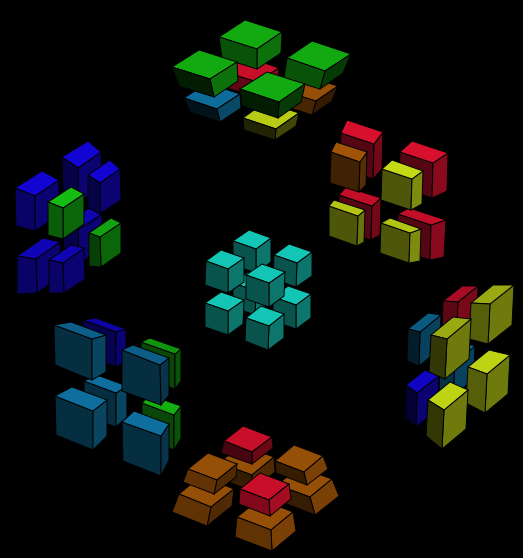
A quick update,
So far I haven't mentioned there is a trivial PLL: a skew twist at the vertex like applying clockwise Y-axis- followed by a counterclockwise X-axis-twist to W-. After such a sequence, W-O0/O5 cubies stay their position and change the orientation in a X->Y->Z->X manner. The rest 6 cubies form two 3-cycle group, W-O1/O3/O7 and W-O2/O4/O6.
I will name this sequence as B, and let it be the core of the following attempts. The following attempts all share a common structure, X B X', where X is a comprehensible sequence and X' is its reverse. Let's see what will happen.
X: A clockwise Y-axis-twist to Y+ followed by a counterclockwise X-axis-twist to X+

We can see that the two 3-cycles are distorted into W-O1/O4/O6 and W-O2/O3/O7.
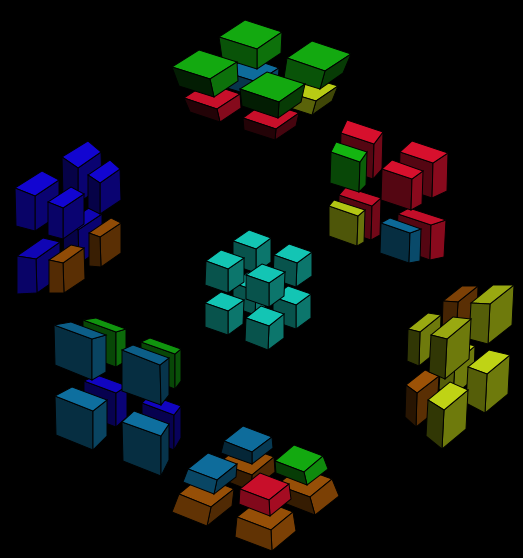
The two 3-cycles become W-O1/O4/O2 and W-O3/O7/O6.
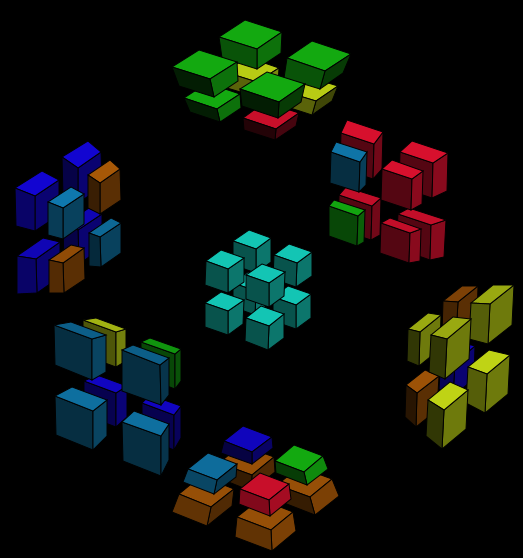
The two 3-cycles become W-O1/O4/O7 and W-O2/O6/O3.
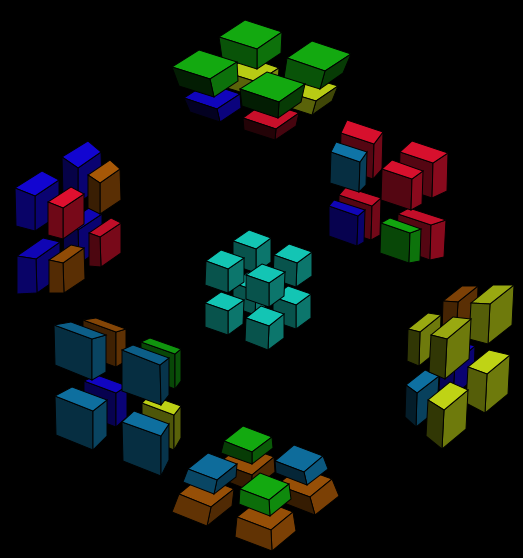
The two 3-cycles become W-O1/O2/O7 and W-O3/O4/O6.
Why do I try five X setups? It turns out the five-X version is effectly identical to B alone. Interesting, right?
Hmm... not particularly useful. It maybe possible to use the combination of these algorithems to achieve something impressive, but it requires a lot of calculation, far more than just staring at the screen for hours. Let's try some other X. It seems extremely boring now, but...
Y: A counterclockwise X-axis-twist to X+ followed by a counterclockwise Z-axis-twist to Z+
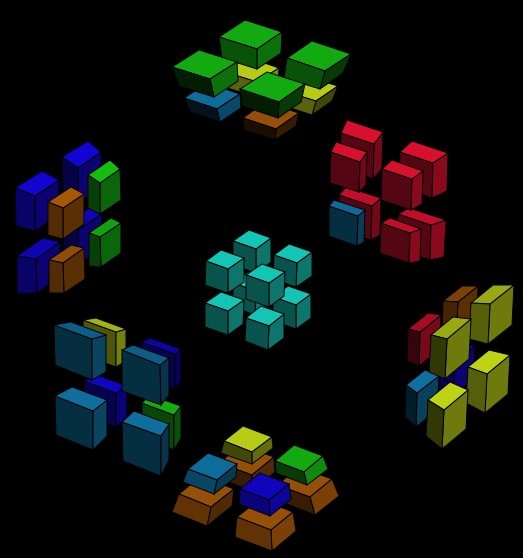
The two 3-cycles become W-O1/O3/O6 and W-O2/O4/O7.
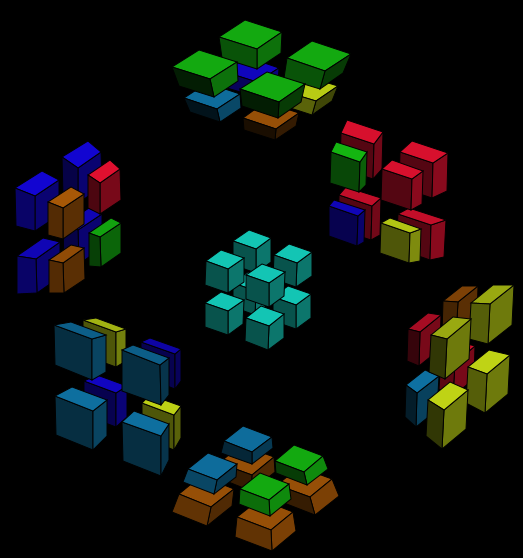
The two 3-cycles become W-O1/O3/O4 and W-O2/O6/O7.
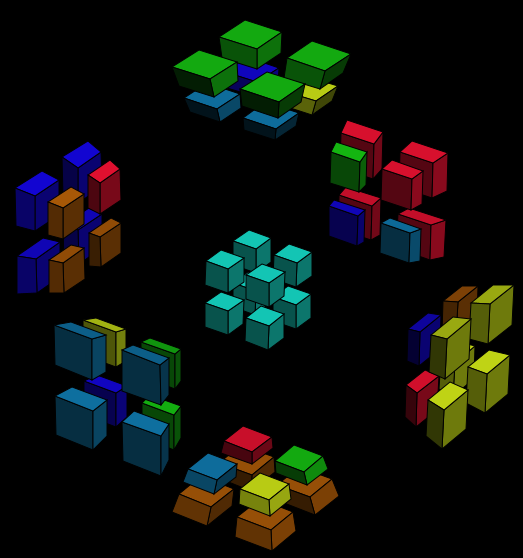
The two 3-cycles become W-O1/O6/O4 and W-O2/O3/O7.
Wow, see what just happened!
### X B X'
We can see that the two 3-cycles are distorted into W-O1/O4/O6 and W-O2/O3/O7.
### YYY B Y'Y'Y'
The two 3-cycles become W-O1/O6/O4 and W-O2/O3/O7.
You may have noticed, I use the A/B/C notation for a reason. It stands for the 3-cycle transition A->B->C->A.
In other words, the quoted two sequences demonstrate a possibility: combining the two, then the 1->4->6->1 cycle will be canceled, and the second 3-cycle effectly becomes W-O2/O7/O3. Let's name this sequence 4XY and see if it reallt does the trick,
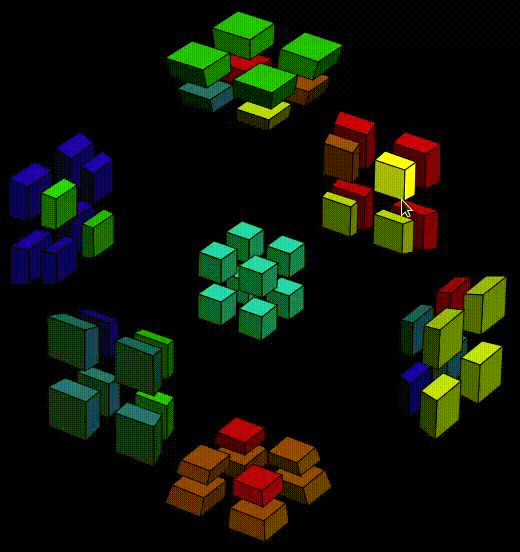
Let's take a look at the final result and check the net effect of the sequence 4XY,

Actually I simplify the algorithm-finding process a lot by directly throwing out the useful PLL sequences and setups. In reality there were countless trial-and-error. But even we have tried so hard, algorithm 4XY still mess up with all cubies' orientation. It is natural to anticipate that after we applying 4XY to resume the position, it is highly possible that we still have to do something to the last cell.
推導出並不純粹的 PLL 公式 4XY。
